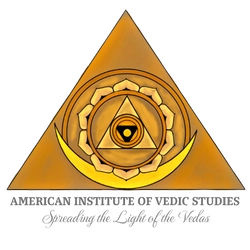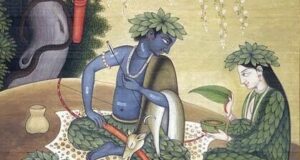Vairagya is one of the most important terms in the Yoga Sutras, which starting from the first Sutras of the text is emphasized as defining Yoga practice. Vairagya is commonly translated as detachment or non-attachment. While these indicate aspects of Vairagya, they are approximations that can mislead us. Vairagya is an untranslatable term like Yoga, Dharma or Karma, with no real equivalent in the English language. We need to understand it directly to move into deeper Yoga practice, for which it is definitive.
Vairagya is the state of vi-raga, or absence of raga, which refers to attractions and cravings for anything external in the realm of body and mind. These are defined according to the three gunas of sattva, rajas and tamas, as the three basic factors behind the external world and its enjoyments, including mental, sensory and physical enjoyments, not only in the physical realm but in all possible lokas or manifest worlds.
Vairagya occurs when we lose attraction or attachment to the external world through our connection to the Purusha/Atman, the inner Self. As the Purusha is of the nature of Ananda or bliss, entering into it, one no longer has any other desires, which are perceived as only its shadows. When one has become the Self of all beings, there is no desire for any personal pleasure, enjoyment, property, achievement or adulation because one reached the immutable essence of all happiness within.
Vairagya is not a state of mental detachment, with the mind holding to its own opinions; it is detachment from the mind, no longer accepting any mental state as defining ultimate truth or reality. It is not a state of mere indifference or neutrality but an inner fullness, peace and happiness that has no interest in seeking happiness externally.
Vairagya and Viveka: Non-attachment and Discernment
The question is how do we reach Vairagya? The answer is through Viveka, another key Yoga and Vedanta term. Viveka is usually rendered as discrimination or discernment, but must be understood relative to these two groups of opposing principles:
*****Discrimination between the Eternal and the Transient (Nitya and anitya). Whenever we realize that something is ephemeral, we lose attraction to it, like quickly forgetting any enjoyment gained in a dream. Only what we realize something as enduring or eternal will we hold on to it.
*****Discrimination between Being and Non-Being (Sat and asat). Being is the only reality that is eternal and real. A non-being has no reality. Yet non-being includes all transient names, forms and becomings, which are ultimately unreal as they pass away like clouds in the sky. When we perceive the reality of Being, we lose an attracting to anything in the realm of becoming, which constitutes the entire external world. Fulfillment can only be in who we are, not in what we want to becomee.
*****Discrimination between Self and not-Self (Atman and anatman). The Self as pure consciousness is our true nature, our ultimate and enduring reality. The not-Self, which includes all the outer factors of body and mind, is not only transient, it doesn’t relate to who we really are. It is ultimately irrelevant. It is like a movie we are watching, not something involving us directly.
*****Discrimination between Truth and Illusion (Satya and Mithya). Truth is ultimately what is eternal, infinite, immutable, unlimited, unqualified and uncompromised, exactly what it is. Illusion an outer appearance of things that is superficial, transient and ultimately inconsequential, with the reality hidden behind it. What we come to perceive as illusory, like a mirage in the desert, we will automatically cease to pursue.
*****Discrimination between Eternal Happiness and eventual sorrow (Ananda and an-ananda). Eternal happiness or Ananda is possible only in our eternal nature as the Self of all. Whatever outer happiness or enjoyment we achieve is circumstantial and eventually ends in sorrow, whether it is some actual disappointment or our own eventual death, in which we must let go of all that we have. True Ananda is immortal and unbounded, while mortal enjoyments are ultimately the cause of suffering.
Vairagya and Yoga Practice
Abhyasa as the practice of Yoga in the Yoga Sutras is not defined relative to asana, pranayama, mantra, meditation or any particular technique, though these may be part of it. It refers to the abidance in a state of Vairagya, which arises through the cultivation of Viveka. It is the key insight born of meditation and the basis of Samadhi. Yoga is Samadhi which is gained by Vairagya, which is disidentification with body and mind, and end of all cravings for outer enjoyments. Vairagya arises from this truth perception born of Samadhi, yet it also increases our abidance in Samadhi.
Vairagya, we must understand, is not about trying to be detached when we are really attached to something. That is merely dishonesty in the mind. Vairagya occurs when we realize that our attachments are illusions, that we cannot hold on to anything. Even the body is not ours, much less anything external, including our home, property and possessions. Even the mind is not ours but is an outer and collective factor. Our physical body and social mind do not go beyond death. Outer enjoyment and happiness is but a reflection of the Ananda within, the inner Consciousness that is our true Self.
Being attached to outer transient objects, qualities and energies is a misperception, an error of judgment. We must correct that error, not simply try to be detached while sustaining a wrong view of the world. The main error judgment (buddhi-dosha) that leads to sorrow, arises from the ego (ahamkara) as identification with body, mind and our place in the external world as who we really are. Vairagya involves realizing through Viveka that such an identification is untrue and the source of needless sorrow.
Our true identity is everything and nothing, the entire universe and the transcendent beyond. We are the seer, not the seen, the state of pure knowing, not any object or quality known or conceivable. Such Vairagya takes us to Samadhi and Ananda that is the true goal of Yoga. Learn not simply to be unattached but to abide in the essence of bliss, the Ananda at the heart of all. That is the Samadhi of Yoga and the ultimate state of Vairagya.
David Frawley (Vamadeva Shastri)







